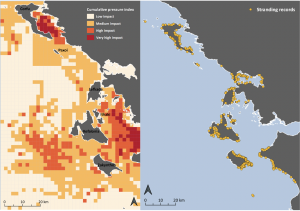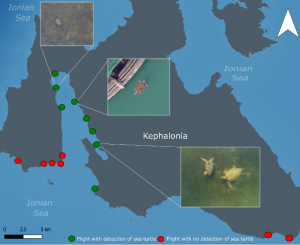DECEMBER 6, 2022
by Nikos Avoukatos
The Ionian Environment Foundation supported research conducted by the Department of Biology of the Aristotle University of Thessaloniki with the aim of promoting the improvement of our understanding of the habitats of sea turtles and their threats in the Ionian Archipelago. The findings, and a set of adaptive management proposals, as they emerge from the project, can drastically contribute to existing conservation efforts while paving the way for the revision of conservation practices and strategies in the wider Ionian region.
The ARIANA project improves our knowledge so far on the use of pelagic and oceanic marine turtle habitats in the Ionian Archipelago, providing a coherent framework for their management. The European Biodiversity Strategy for 2030 stipulates that by 2030 Member States should protect 30% of their marine and land systems. Visiting and assessing the ecological status and value for every part of our seas is practically impossible. “What we can do is make the best use of new technologies and make the most of the possibilities they offer us. Thus, in ARIANA, data from field surveys, satellite recordings and bibliographic sources are the basis for the development of ecological models for spatial identification and imaging of the valuable marine habitats of turtles in the Ionian Archipelago. The predictive capacity of these models is assessed by carrying out additional focused field work using unmanned aerial vehicles, leading to a gradual optimization of the produced result,” explains associate professor of the Department of Biology of the Aristotle University of Thessaloniki, Antonis Mazaris .
The ARIANA project took the first step towards the spatial delimitation of the main foraging areas of sea turtles in the Ionian Archipelago. At the same time, utilizing a large-scale dataset on the spatial distribution of human activities, it produced spatially exclusive risk assessments. The AUTh team developed cumulative pressure indicators allowing the emergence of invisible interactions of human activities and sea turtles in the Ionian sea area. In combination, sea turtle stranding data were collected and analyzed, allowing the emergence of spatio-temporal patterns of space use and the threats of sea turtles.


